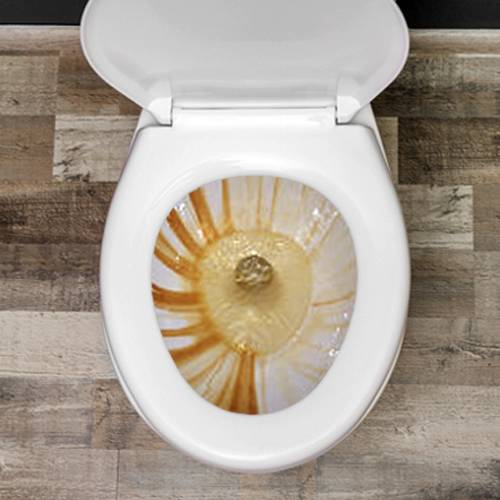
Effects of Iron & Manganese in Your Water
The presence of iron and manganese in your drinking water can impact both taste and appearance. Beyond giving water a metallic flavor, these minerals are responsible for unsightly staining and potential damage to your home.
When ferrous iron is exposed to oxygen, it oxidizes and forms orange or brown stains. These stains often appear on toilets, bathtubs, sinks, showers, dishwashers, and washing machines. Manganese, on the other hand, causes dark brown or black stains on laundry, plumbing fixtures, and other surfaces.
In addition to cosmetic issues, iron and manganese can also contribute to pipe corrosion and reduce the efficiency of water-using appliances.
Does Your Water Taste or Smell Like Metallic?
Iron deposits in your water can create a strong metallic taste, making tap water unpleasant to drink and altering the flavor and appearance of your food.
Vegetables cooked or washed in water containing ferrous iron may become discolored and develop an off-putting taste. Beverages like coffee and tea made with iron-laden water can also taste bitter or unappealing.
Beverages that are made using iron-dissolved water will taste bitter or unappealing, such as coffee and tea.

What Causes a Metallic Taste in Drinking Water?
-
A metallic taste or odor in drinking water is often the result of metal pipes or the presence of minerals such as iron, copper, or manganese.
-
In many newer homes, this taste is common because the plumbing has not yet developed a protective lime scale coating, allowing more metal to leach into the water.
- Well owners are more likely to notice metallic tastes or smells compared to those using city water.

How to Treat Magnesium and Iron in Drinking Water
A quality water filtration system can effectively reduce iron levels, eliminating metallic tastes and odors from your water. In more severe cases, replacing aging pipes or flushing your plumbing system may be necessary to resolve the problem.
Testing your water is the first step to identify the iron concentration and uncover any other potential issues. If you’re experiencing these concerns, we offer a range of tailored solutions to meet your specific needs.
What Is an Acceptable Iron Level in Drinking Water?
In many cases where iron is found, manganese is also present. While low levels of manganese are safe for human health, elevated manganese levels are toxic and a health risk for human consumption.
If you would like to learn more about the quality of your water, contact us or request a quote today! Sign up for our free in-home water test today.
Facts About Iron and Manganese in Water:
-
Manganese (Mn) is often found in groundwater, typically alongside iron (Fe).
-
Iron exists in two forms in water: soluble ferrous iron (clear water iron) and insoluble ferric iron (rusty or red water iron).
-
The EPA’s recommended limits for drinking water are 0.3 mg/L for iron and 0.05 mg/L for manganese.
-
Dissolved manganese can give well water a black tint, while iron exposed to oxygen causes orange or brown staining.
-
Although low levels of iron aren’t harmful, excessive amounts may cause digestive issues and stomach discomfort.
-
Iron interferes with soap, making it harder to rinse clean and potentially leaving residue on skin that may cause irritation or contribute to premature aging, such as wrinkles.
-
Iron staining commonly appears in toilets, bathtubs, showers, sinks, dishwashers, and washing machines.
-
Manganese can leave brownish-black stains on laundry, plumbing, and fixtures.
-
Iron buildup can lead to corrosion of plumbing fixtures and form deposits inside pipes. When these deposits break loose, rust particles may enter the water supply.



